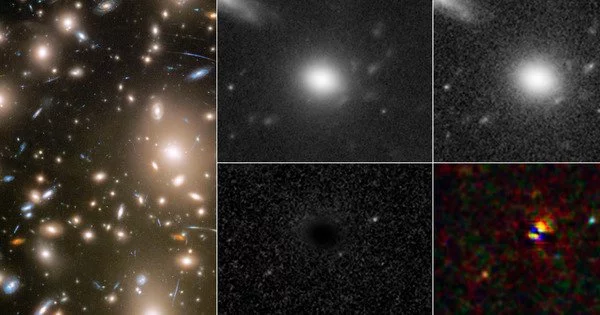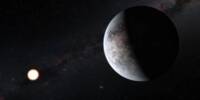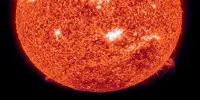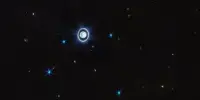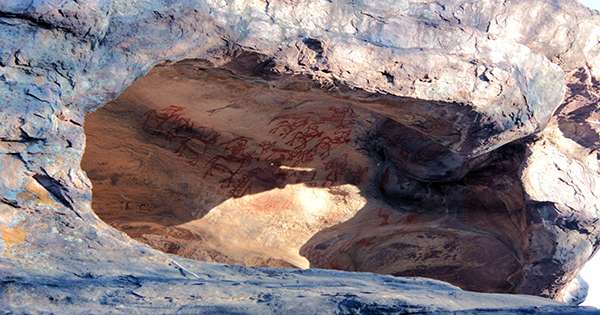Despite its age and small size, the Hubble Space Telescope remains one of the best telescopes in the world. In comparison to the massive 8-10m telescopes built on the ground, with even larger ones planned in the future, the 2.4m Hubble mirror is relatively standard for modern research telescopes, with optics approaching their third decade of use. However, it consistently outperforms many of the most advanced ground-based telescopes and is still regarded as the pinnacle of optical and ultraviolet astronomy, with demand for its use in research far outstripping available observing time each year.
NASA’s Hubble Space Telescope captured three different moments in a distant supernova explosion in a single snapshot. The star exploded more than 11 billion years ago, when the universe was only a fifth the age it is now (13.8 billion years).
This is the first comprehensive study of a supernova so early in the universe’s history. The findings could help scientists understand how stars and galaxies formed in the early universe. The supernova images are also unique in that they depict the early stages of a stellar explosion.
“It is quite rare that a supernova can be detected at a very early stage because that stage is really short,” explained Wenlei Chen, first author of the paper and a postdoctoral researcher in the University of Minnesota School of Physics and Astronomy. “It only lasts for hours to a few days, and it can be easily missed even for a nearby detection. In the same exposure, we are able to see a sequence of the images – like multiple faces of a supernova.”
It is quite rare that a supernova can be detected at a very early stage, because that stage is really short. It only lasts for hours to a few days, and it can be easily missed even for a nearby detection. In the same exposure, we are able to see a sequence of the images – like multiple faces of a supernova.
Wenlei Chen
This was possible through a phenomenon called gravitational lensing, which was first predicted in Einstein’s theory of general relativity. In this case, the immense gravity of the galaxy cluster Abell 370 acted as a cosmic lens, bending and magnifying the light from the more distant supernova located behind the cluster.
The warping also produced multiple images of the explosion over different time periods that all arrived at Earth at the same time and were caught in one Hubble image. That was possible only because the magnified images took different routes through the cluster due both to differences in the length of the pathways the supernova light followed and to the slowing of time and curvature of space due to gravity.
The Hubble exposure also captured the fading supernova’s rapid change of color, which indicates temperature change. The bluer the color means the hotter the supernova is. The earliest phase captured appears blue. As the supernova cooled its light turned redder.
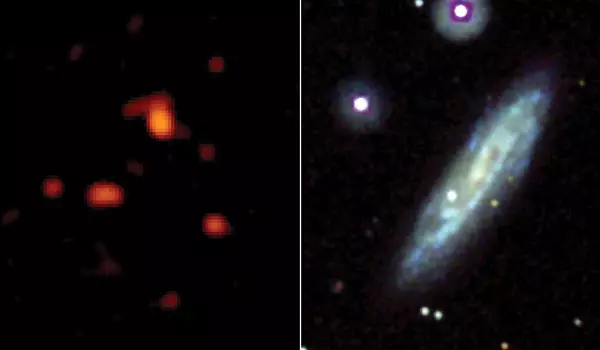
“You see different colors in the three different images,” said Patrick Kelly, study leader and assistant professor in the School of Physics and Astronomy at the University of Minnesota. “You have the massive star; the core collapses, produces a shock, heats up, and then cools over a week. That has to be one of the most incredible things I’ve ever seen!”
This is also the first time that astronomers have been able to determine the size of a dying star in the early universe. This was based on the brightness of the supernova and the rate of cooling, both of which are affected by the size of the progenitor star. Hubble observations show that the red supergiant whose supernova explosion the researchers discovered was about 500 times larger than the Sun.
Chen, Kelly, and an international team of astronomers discovered this supernova while combing through Hubble data archives for transient events. Chen created machine-learning algorithms to find these transients, but this was the only one found.
Chen and Kelly have both scheduled time for NASA’s James Webb Space Telescope to observe even more distant supernovae. They hope to contribute to a catalog of very distant supernovae, which will aid astronomers in determining whether stars that existed billions of years ago differed from those in the nearby universe.
